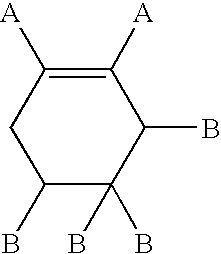Photoinitiator blends for high speed triggering
a technology of photoinitiator and blend, which is applied in the direction of synthetic resin layered products, packaging, containers preventing decay, etc., can solve the problems of increased risk of toxicity, so as to reduce the concentration of headspace oxygen and increase the barrier property
- Summary
- Abstract
- Description
- Claims
- Application Information
AI Technical Summary
Benefits of technology
Problems solved by technology
Method used
Image
Examples
examples
[0087] Several commercially available photoinitiators were studied as blends with BBP3, the current PI from Chevron-Phillips. Isopropylthioxanthone (ITX) was found to be particularly effective in combination with BBP3. Nearly doubling the cobalt level was found to positively influence the triggering speed, but the magnitude of the effect was less than adding ITX.
[0088] There is a need to trigger films at substantially greater speeds than are currently possible with the model 4100 Scavenging Initiation System (SIS) units. Current triggering units are limited to speeds of less than about 20 fpm for room temperature or below fill conditions. Model 4100 triggering units are based on low-pressure germicidal lamps that are limited to approximately 5-10 mW / cm2 intensity at 254 nm. Reformulation of the catalyst and photoinitiator package in the Oxygen Scavenging Layer (OSL) has been demonstrated as one means to achieve higher speed triggering.
[0089] Alternative photoinitiators to Chevron'...
PUM
| Property | Measurement | Unit |
|---|---|---|
| Time | aaaaa | aaaaa |
| Percent by mass | aaaaa | aaaaa |
| Percent by mass | aaaaa | aaaaa |
Abstract
Description
Claims
Application Information
 Login to View More
Login to View More - R&D
- Intellectual Property
- Life Sciences
- Materials
- Tech Scout
- Unparalleled Data Quality
- Higher Quality Content
- 60% Fewer Hallucinations
Browse by: Latest US Patents, China's latest patents, Technical Efficacy Thesaurus, Application Domain, Technology Topic, Popular Technical Reports.
© 2025 PatSnap. All rights reserved.Legal|Privacy policy|Modern Slavery Act Transparency Statement|Sitemap|About US| Contact US: help@patsnap.com

